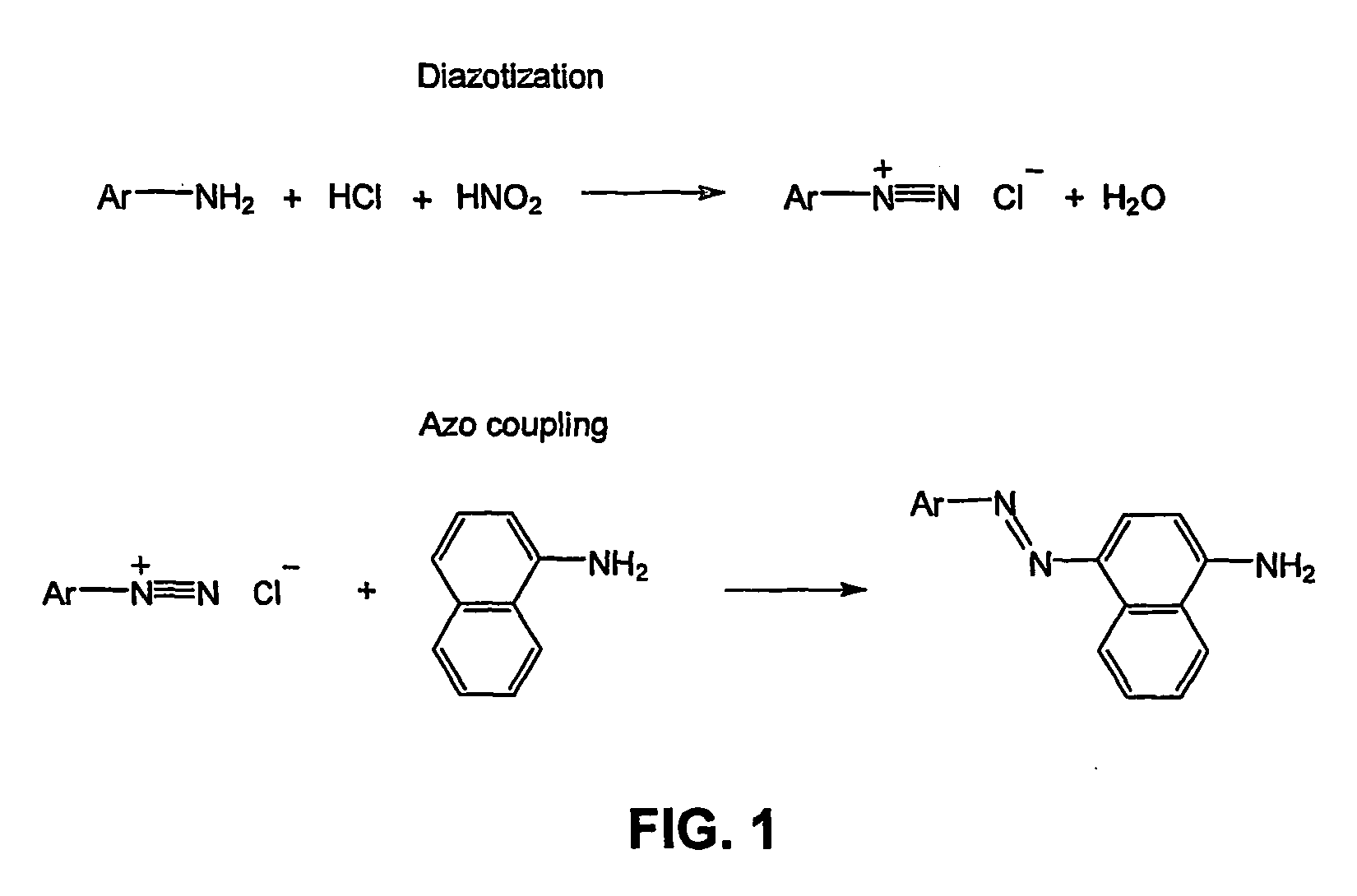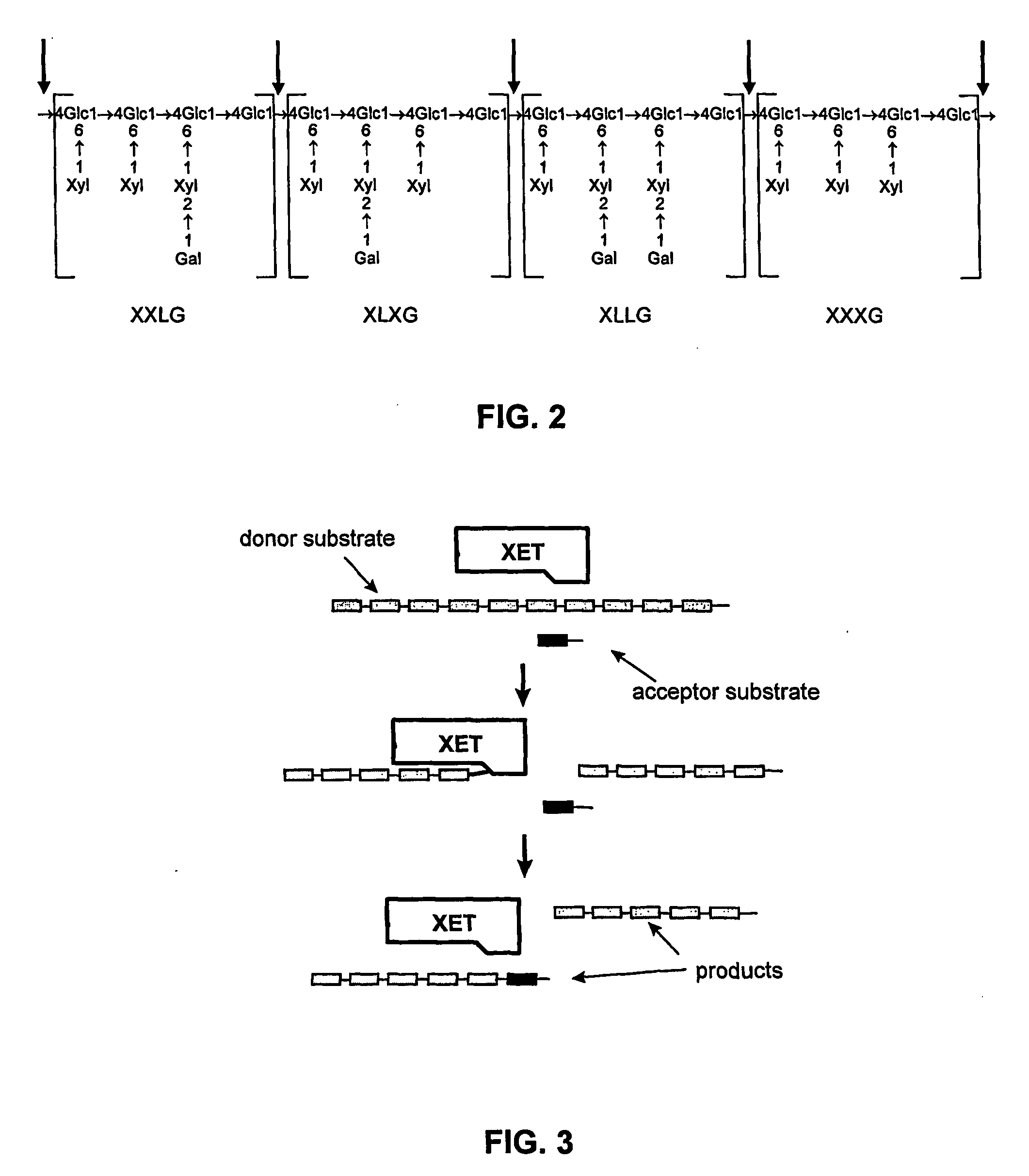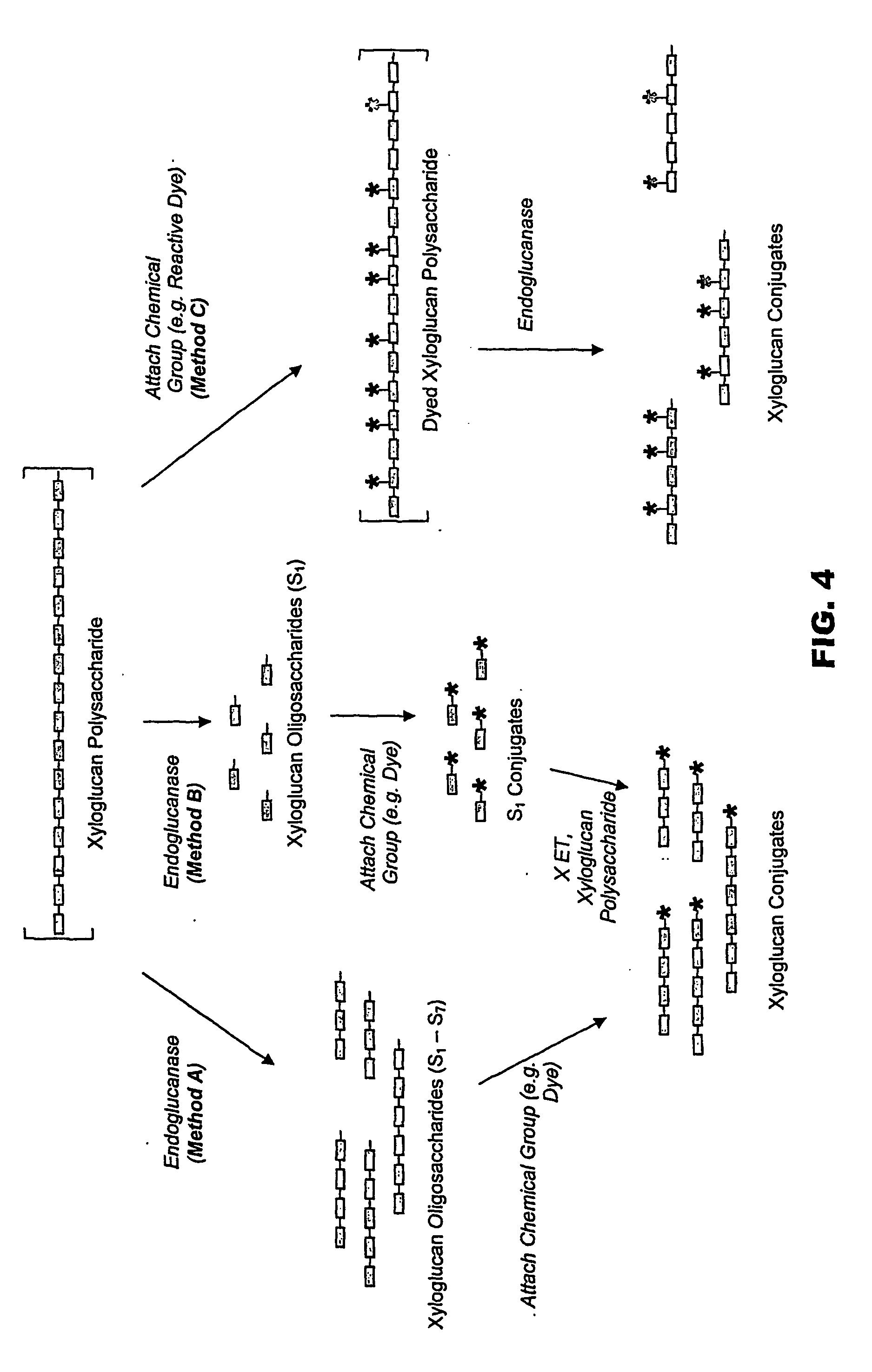Xyloglucan conjugates useful for modifying cellulosic textiles
a cellulosic textile and xyloglucan technology, applied in the field of xyloglucan conjugates, can solve the problems of low production efficiency of vat dyes, low application efficiency of sulfur dyes, and constant loss of commercial value of dyes, so as to improve the quality of the resulting fabric, prevent the spread of dyes, and increase the efficiency of weaving processes
- Summary
- Abstract
- Description
- Claims
- Application Information
AI Technical Summary
Benefits of technology
Problems solved by technology
Method used
Image
Examples
example 1
[0087] Partial digestion of xyloglucan with endoglucanase and reductive amination with aniline: Tamarind xyloglucan (1.0 g) was dissolved in 100 ml 50 mM acetate buffer (pH 5.0) and treated with 1000 U endo-glucanase (“endo-cellulase” from Megazyme, Cat. No. E-CELTR). After agitating the mixture for 30 min at 20° C., 1.0 M acetic acid was added to bring the pH to 3.85, followed by addition of 1.0 ml aniline. The mixture was stirred for 15 min at 70° C., cooled, treated with 100 mg NaCNBH3, and stirred for 4 h at 70° C. The solution was dialyzed (MWCO 1000) against 50 mM acetate buffer (pH 5.0) (5×4 l).
example 2
[0088] Azo coupling of XGO-aniline: The XGO-aniline solution from Example 1 was treated, at 0° C., with 800 μl diazonium salt suspension (prepared from 173 mg sulfanilic acid with 6 M HCl (500 μl) and 2.5 M NaNO2 (400 μl)), stirred for 18 h at 4° C., and purified by ultrafiltration (MWCO 3000).
example 3
[0089] Complete digestion of xyloglucan with endoglucanase: Tamarind xyloglucan (2.0 g) was dissolved in 200 ml 50 mM acetate buffer (pH 5.0) and treated with 300 U endo-glucanase (“endo-cellulase” from Megazyme, Cat. No. E-CELTR). After agitating the mixture for 24 h at 50 CC, it was boiled for 5 min, filtered, and lyophilized to give 2.6 g 77% S1.
PUM
| Property | Measurement | Unit |
|---|---|---|
| Size | aaaaa | aaaaa |
| Water repellent | aaaaa | aaaaa |
Abstract
Description
Claims
Application Information
 Login to View More
Login to View More - R&D
- Intellectual Property
- Life Sciences
- Materials
- Tech Scout
- Unparalleled Data Quality
- Higher Quality Content
- 60% Fewer Hallucinations
Browse by: Latest US Patents, China's latest patents, Technical Efficacy Thesaurus, Application Domain, Technology Topic, Popular Technical Reports.
© 2025 PatSnap. All rights reserved.Legal|Privacy policy|Modern Slavery Act Transparency Statement|Sitemap|About US| Contact US: help@patsnap.com



